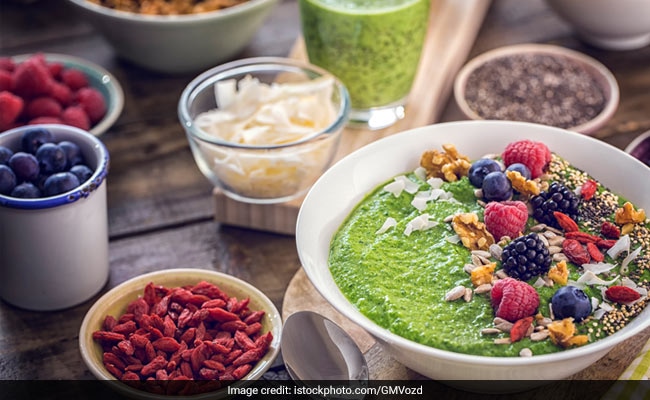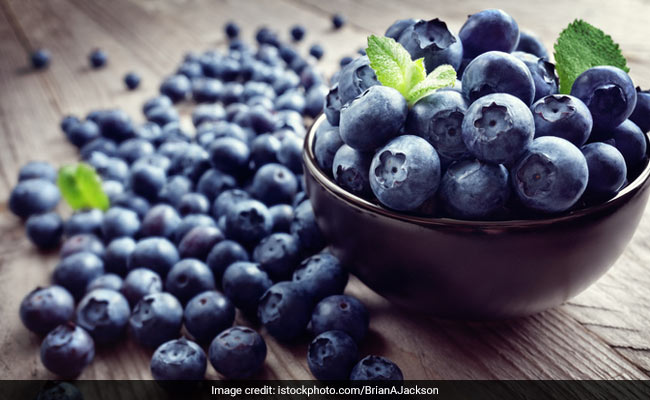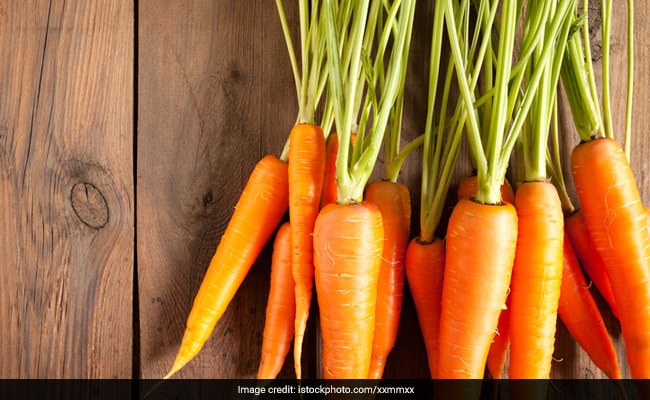
Antioxidants are usually heard of in relation to cardiac diseases, for skin health or weight management. We know that obesity and inactivity are the major risk factors of type 2 diabetes, recent research results have indicated that oxidative stress may be one of the causes for insulin resistance and less insulin secretion which are well established causes for the onset of diabetes.
A well-established fact is that excessive sugar levels in the blood leads to oxidation of glucose to form free radicals, when the level of these crosses the body’s antioxidant systems capacity, it leads to oxidative stress which has a detrimental effect on the complications and management of diabetes. Antioxidants prevent this oxidation process protecting the DNA and proteins, thereby preventing cell, tissues and organs from permanent damage.
1. Anthocyanins are naturally occurring polyphenolic compounds that colour your food black, blue, purple, and different shade of red. Research has pointed towards a positive relation between consumption of anthocyanin rich foods and a lowered risk of diabetes. These flavonoids that colour our food beautiful, have been linked to antioxidant activity, improved insulin resistance, and hypoglycaemic effects.
Food Sources: Blueberries, cranberry, bilberry, black raspberry, red raspberry, and blackberry; blackcurrant, cherry, eggplant (aubergine) peel, black rice, concorde grape, muscadine grape, red cabbage, and violet petals. Red- fleshed peaches and apples contain anthocyanins. Black Soybean coat seems to have the most amounts.
 Anthocyanins are naturally occurring polyphenolic compounds
Anthocyanins are naturally occurring polyphenolic compounds
2. Allium Compounds containing sulphur have been used in traditional medicine for times immemorial. Research has now proven what our fore fathers knew. The organo shulphur compounds are associated with anti-oxidant and anti-inflammatory properties in addition to improving hyperglycemia, hyperlipidemia, and protection against vascular damage.
Food Sources: Garlic is known for its anti-inflammatory properties in addition to its antifungal, antibacterial, antiprotozoal and antiviral activities. It improves vascular health, controls cholesterol and blood sugars because of which it protects our kidneys and nerves against damage caused by high blood sugars. In fact garlic is touted as a promising therapeutic tool for treating diabetes. Onions are another source of these compounds in addition onions contain quercetin, both these together are the main reason for its hypoglycaemic property. These are also help reduce oxidative stress, control cholesterol, increase the activity of antioxidant enzyme and insulin secretion.
3. Beta Carotene the precursor of Vitamin A in our body is a potent anti-oxidant. In a recent study researchers at the Stanford University School of Medicine have determined that people with high levels of beta carotene are better protected against developing type 2 diabetes, even with a positive genetic predisposition. Other studies have also shown a positive role of beta carotene in prevention of diabetes onset. It is also known to have a beneficial effect on insulin resistance.
Food Sources: Green- Methi, Spinach, bathua, coriander, mint, green chillies. Red and Orange - carrots, tomato, pumpkin, yellow-range carrots, mango, musk melon, and papaya.
 Beta Carotene the precursor of Vitamin A
Beta Carotene the precursor of Vitamin A
4. Catechins belong to the family of flavonoids and possess antioxidant properties. Catechin are very good scavengers of free radicals as proven by a number of studies published and are potent antioxidants. The anti-diabetic effect of catechin is related to the enhancement of antioxidant systems of the body. They are found to be protective against damage to DNA in animal studies. Catechin is also related to a reduction in body fat which has a direct link to lifestyle diseases including diabetes.
Food Sources: Tea, with green tea having a far higher level. Cocoa products also contain catechins though not at the level of tea. Black grapes, black berries and certain wines also contribute to catechins in our food.
5. Manganese: Minerals also function as antioxidants. Manganese functions as an integral part of key enzymes and is essential for the activation of other enzymes in our body. Manganese superoxide dismutase (MnSOD) is the antioxidant enzyme in the mitochondria, the main site of massive oxidation in our body. Deficiency of this mineral is linked to impaired glucose tolerance and altered carbohydrate metabolism. Though not linked to an increased risk of diabetes it has been found to have a role in daily sugar control.
Food Sources: Whole grains,like oats, brown rice, rye, spinach, garbanzo beans, soy bean, and pumpkin seeds are also good sources of this mineral.
6. Zinc is primarily linked to the immune system. In addition to this, it is also needed for cell growth, wound healing, and the breakdown of carbohydrate for energy. Zinc is an antioxidant, protecting our cells from free radicals. It has been linked to development of prediabetes and it plays an important role in the synthesis of insulin in the beta cells of pancreas, which it also protects against destruction. In a review which compared 25 studies it was found that the fasting, post prandial sugar and the HbA1c showed reduction in people with Zinc supplementation.
Food Sources: Grass fed lamb and beef, chicken, pumpkin seeds, chick peas, cashew nuts, mushrooms, yogurt, spinach.
India as the diabetes capital of the world, is a tag we could well do without. Sadly, the reality is that we are fast reaching this stage. We have 62 million diagnosed diabetics! Genetics predisposes us for diabetes but we can control the environmental factors like obesity, diet and our lifestyle to avoid or delay the onset.
Disclaimer:
The opinions expressed within this article are the personal opinions of the author. NDTV is not responsible for the accuracy, completeness, suitability, or validity of any information on this article. All information is provided on an as-is basis. The information, facts or opinions appearing in the article do not reflect the views of NDTV and NDTV does not assume any responsibility or liability for the same.
A well-established fact is that excessive sugar levels in the blood leads to oxidation of glucose to form free radicals, when the level of these crosses the body’s antioxidant systems capacity, it leads to oxidative stress which has a detrimental effect on the complications and management of diabetes. Antioxidants prevent this oxidation process protecting the DNA and proteins, thereby preventing cell, tissues and organs from permanent damage.
Antioxidants for Diabetics
1. Anthocyanins are naturally occurring polyphenolic compounds that colour your food black, blue, purple, and different shade of red. Research has pointed towards a positive relation between consumption of anthocyanin rich foods and a lowered risk of diabetes. These flavonoids that colour our food beautiful, have been linked to antioxidant activity, improved insulin resistance, and hypoglycaemic effects.
Food Sources: Blueberries, cranberry, bilberry, black raspberry, red raspberry, and blackberry; blackcurrant, cherry, eggplant (aubergine) peel, black rice, concorde grape, muscadine grape, red cabbage, and violet petals. Red- fleshed peaches and apples contain anthocyanins. Black Soybean coat seems to have the most amounts.

2. Allium Compounds containing sulphur have been used in traditional medicine for times immemorial. Research has now proven what our fore fathers knew. The organo shulphur compounds are associated with anti-oxidant and anti-inflammatory properties in addition to improving hyperglycemia, hyperlipidemia, and protection against vascular damage.
Food Sources: Garlic is known for its anti-inflammatory properties in addition to its antifungal, antibacterial, antiprotozoal and antiviral activities. It improves vascular health, controls cholesterol and blood sugars because of which it protects our kidneys and nerves against damage caused by high blood sugars. In fact garlic is touted as a promising therapeutic tool for treating diabetes. Onions are another source of these compounds in addition onions contain quercetin, both these together are the main reason for its hypoglycaemic property. These are also help reduce oxidative stress, control cholesterol, increase the activity of antioxidant enzyme and insulin secretion.
3. Beta Carotene the precursor of Vitamin A in our body is a potent anti-oxidant. In a recent study researchers at the Stanford University School of Medicine have determined that people with high levels of beta carotene are better protected against developing type 2 diabetes, even with a positive genetic predisposition. Other studies have also shown a positive role of beta carotene in prevention of diabetes onset. It is also known to have a beneficial effect on insulin resistance.
Food Sources: Green- Methi, Spinach, bathua, coriander, mint, green chillies. Red and Orange - carrots, tomato, pumpkin, yellow-range carrots, mango, musk melon, and papaya.

4. Catechins belong to the family of flavonoids and possess antioxidant properties. Catechin are very good scavengers of free radicals as proven by a number of studies published and are potent antioxidants. The anti-diabetic effect of catechin is related to the enhancement of antioxidant systems of the body. They are found to be protective against damage to DNA in animal studies. Catechin is also related to a reduction in body fat which has a direct link to lifestyle diseases including diabetes.
Food Sources: Tea, with green tea having a far higher level. Cocoa products also contain catechins though not at the level of tea. Black grapes, black berries and certain wines also contribute to catechins in our food.
5. Manganese: Minerals also function as antioxidants. Manganese functions as an integral part of key enzymes and is essential for the activation of other enzymes in our body. Manganese superoxide dismutase (MnSOD) is the antioxidant enzyme in the mitochondria, the main site of massive oxidation in our body. Deficiency of this mineral is linked to impaired glucose tolerance and altered carbohydrate metabolism. Though not linked to an increased risk of diabetes it has been found to have a role in daily sugar control.
Food Sources: Whole grains,like oats, brown rice, rye, spinach, garbanzo beans, soy bean, and pumpkin seeds are also good sources of this mineral.
6. Zinc is primarily linked to the immune system. In addition to this, it is also needed for cell growth, wound healing, and the breakdown of carbohydrate for energy. Zinc is an antioxidant, protecting our cells from free radicals. It has been linked to development of prediabetes and it plays an important role in the synthesis of insulin in the beta cells of pancreas, which it also protects against destruction. In a review which compared 25 studies it was found that the fasting, post prandial sugar and the HbA1c showed reduction in people with Zinc supplementation.
Food Sources: Grass fed lamb and beef, chicken, pumpkin seeds, chick peas, cashew nuts, mushrooms, yogurt, spinach.
India as the diabetes capital of the world, is a tag we could well do without. Sadly, the reality is that we are fast reaching this stage. We have 62 million diagnosed diabetics! Genetics predisposes us for diabetes but we can control the environmental factors like obesity, diet and our lifestyle to avoid or delay the onset.
Disclaimer:
The opinions expressed within this article are the personal opinions of the author. NDTV is not responsible for the accuracy, completeness, suitability, or validity of any information on this article. All information is provided on an as-is basis. The information, facts or opinions appearing in the article do not reflect the views of NDTV and NDTV does not assume any responsibility or liability for the same.
Track Latest News Live on NDTV.com and get news updates from India and around the world

